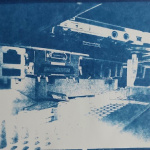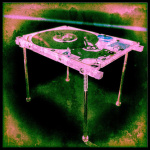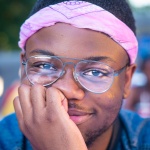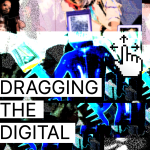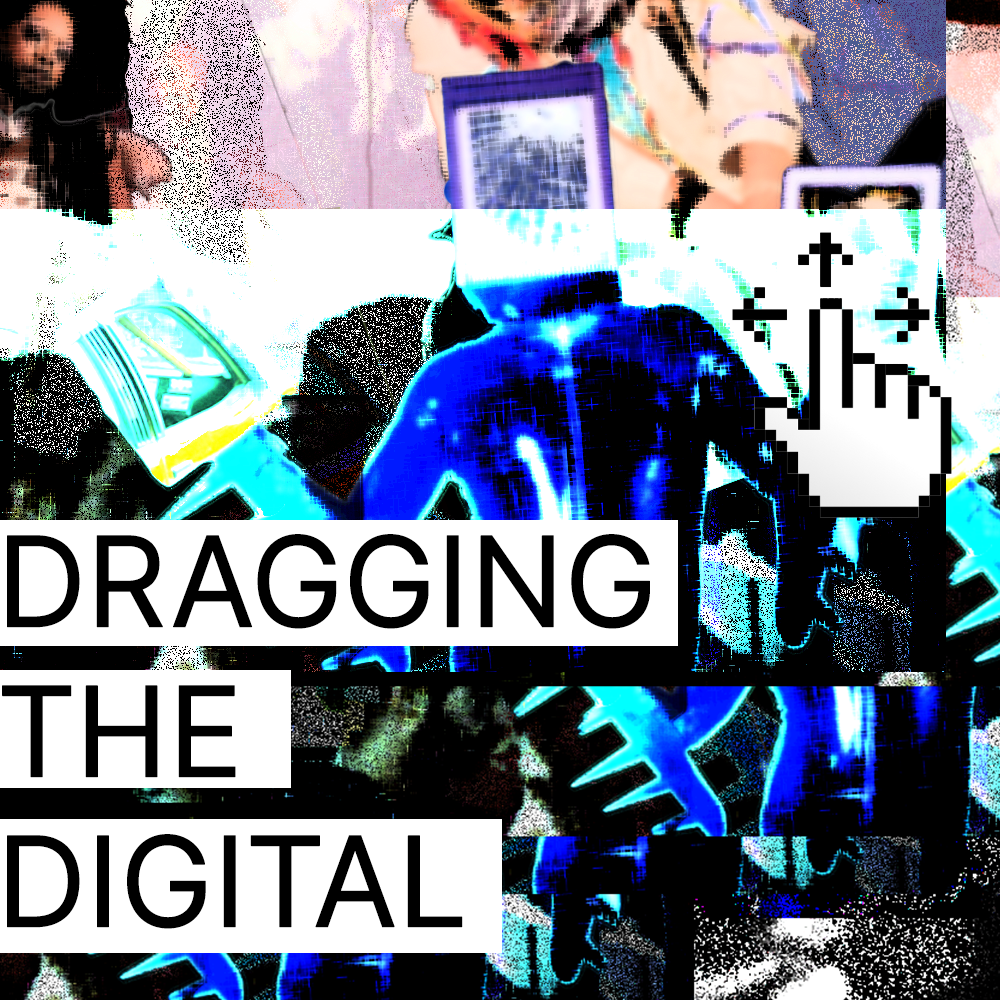Despite its distinctly live foundations, drag is no exception in being shaped by tech + art trends. While galleries toy with the next hyped up bit of computing, and the internet continues to completely upend pop media economies, drag’s form shifts in its own unique and transgressive ways. This is not just in audience experience, but also specifically in the form of the craft, and how performance oriented tech is being applied, twisted and broken.
“An Army of iPads”
Drag is heavily informed by the scene and context in which it is performed. While generalisations will only take you so far, if you walk into a random show in Brighton you’ll likely get a very different experience to somewhere like Birmingham, where the focus is more “bastard drag” than traditional English drag stylings. This variation applies to the availability of performance technology to drag artists too, venues in bigger cities have better-equipped performance spaces, which limits the scope of where technologically-minded performers can execute their work.
Petty Nonsense, whose work blurs the line between drag and art installation, has found a way to work outside of these restraints. Instead of traditional projections, they use three iPads on different parts of their body, cutting together pre-recorded performance to create an unusual drag experience. Using the iPads has the benefit of allowing Petty to circumvent venue tech restrictions, such as the presence or quality of a traditional projector. This style of work got them to the runner up position in The Glory-run drag competition Lipsync 1000.

Petty Nonsense, photo by Dafydd Owen
For them, the key distinction between this and the broad appeal, traditional drag work they started from in Bournemouth is the difference between “bearing witness” and standard “audience participation”. The reception of this more technologically involved work has varied depending on location. In their “drag home” of East London, the response to their iPad-based work has been generally positive, but they told me about the “humbling” experience of performing in Brighton to a much less receptive crowd.
Importantly, this digital revolution doesn’t come without a price tag. The most reliable entry-level audio production software is Garage Band or Audacity, and Garage Band can only easily be accessed through Apple’s prohibitively expensive devices. Audacity on the other hand is available across platforms, for free, but requires a significant time investment and/or plugins to get it fully functioning. When we get to video production software a good free option is near on impossible to find. And that’s before we get to the execution on the night, where time and financial limitations mean it’s not always possible to get (usually also underpaid) technical operators to fully display the art as envisioned.
Drag past and present has been pioneered and shifted by people who don’t have the capital required for traditional performance spaces, but have talent and often need some cash. This often isn’t conducive to the kind of time and financial investments required to make big technical productions work, and why the performers who do are predominantly white despite the culture being so defined by QPOC.
However, there’s always people who find a way. Many of the performers who do this sort of work found access to this skillset through their day job, or software that ‘fell off the back of a truck’. People are also increasingly figuring out and sharing the knowledge of how to apply arts funding opportunities, which make investments like these a little more feasible. If anyone can figure out how to make scarcity work it’s a drag artist.

“Getting naked isn’t fun when you don’t have people screaming at you”
While the explosion of ‘digital drag’ took place when the UK Government (and others) had performance venues closed due to the emergence of Covid-19, to start there would only be telling half the story.
The proper starting point can be situated with the “bedroom queen”, who primarily or exclusively would do drag from their bedrooms to post on video platforms, perhaps the most prominent of these now being UK Drag Race performer Ally Cub (at the time going by Scaredy Kat).
At the centre of this early digital drag space were the “antihauls” popularised by Kimberly Clark, which flipped the consumerist tendencies of the beauty YouTube powerhouse on their head. For many, especially those who couldn’t enter queer venues, YouTube was their only way of experiencing drag that wasn’t filtered through the very particular style of RuPaul’s Drag Race.
There were also people like Jasmine Masters, with long-established in person drag careers, who have defined the language of memes and the internet well beyond their traditional performance work.
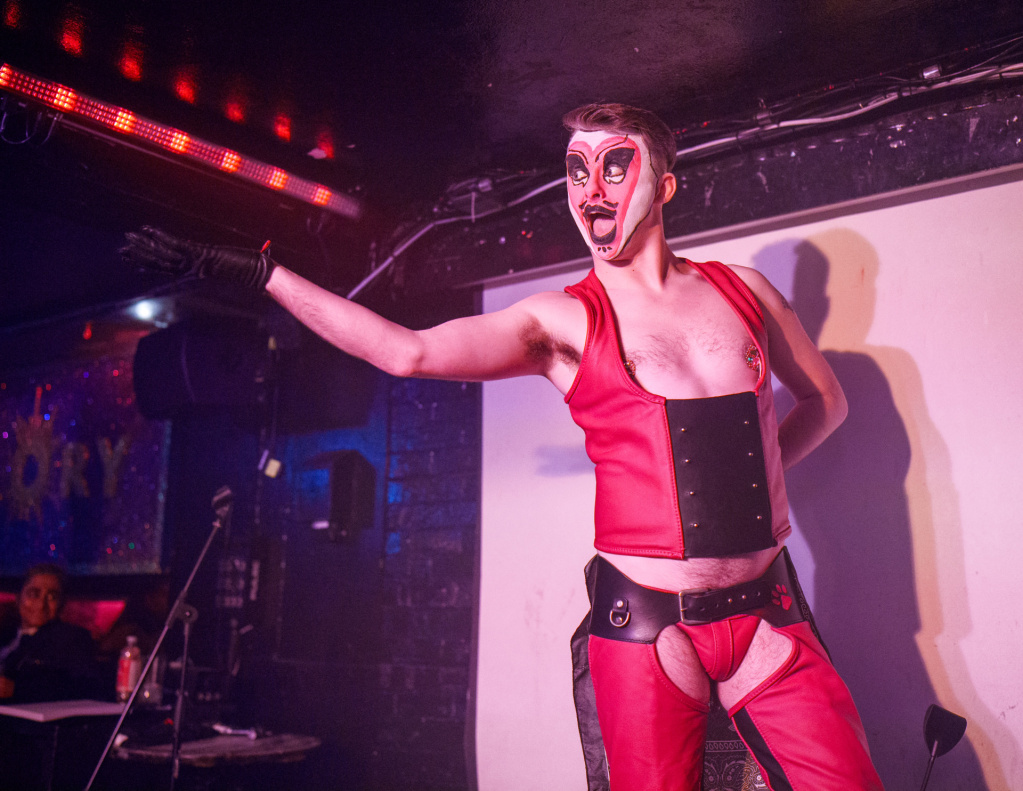
Powdered Sugar, photo by James Klug
In 2020 and 2021, when the UK government forced live performance and nightlife venues to shut down for the safety of the people, a lot of drag performers were left in a difficult position, given their particular reliance on these spaces. As a result of that, many artists ended up playing around with new technologies including using platforms like Twitch and Zoom. Even artists like the self-described “tech phobic” Gareth Joyner (the writer, comedian and performer behind Myra Dubois and Frank Lavender) had to learn the basics of streaming to make and put out work.
For some, this was a time of experimentation that they have since largely abandoned. Powdered Sugar described how they toyed with further integrating digital drag into their craft, but ultimately “Getting naked isn’t fun when you don’t have ppl cheering and screaming at you.” However, they said they might reconsider it if they could find a way to make these tech and multimedia elements feel fundamental to the work rather than just operating as a prop.
This was a feeling paralleled by performers across the board even those who warmed a little on technology – with Joyner discussing how on their Britain’s Got Talent 2020 run, which had to have a studio based semi-final due to COVID-19, the pumped in canned laughter “wasn’t organic laughter that you can work with.”
“London’s Multilingual Drag Creature” Bard the Beholder also described the digital work as a useful flirtation, but not particularly in line with his current practice – especially because of how these elements rely on extra work which usually comes without extra compensation.
For many, it was a real point of growth, with Petty Nonsense citing it as the moment where they really ramped up the experimenting with video that is at the core of their present work. Joyner isn’t quite fully past their tech phobia, they’re including more video elements in their work while still maintaining their style – “the videos were collage stop motion by my pal Josh Quinton so they still had a very analogue, ‘handmade’ feel.”
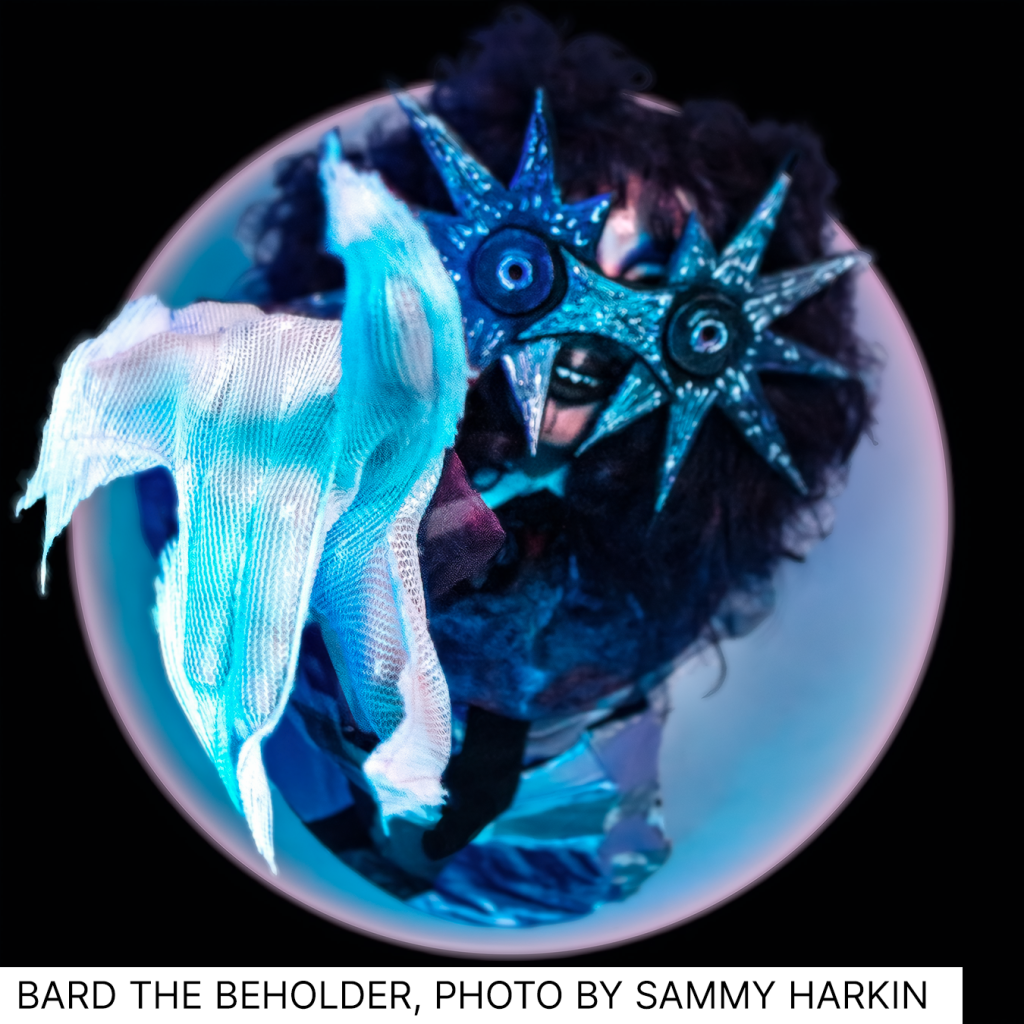
A notable effect here (both in and outside of drag) is that performers and audience members for whom standard venues were inaccessible, could actually participate in the experience. However, that upsurge in access to afforded to some disabled people by digital drag hasn’t been carried through to physical spaces now that they’re reopened. Despite London being the biggest city in the country, it does not have a consistent queer or queer-friendly performance venue that is fully wheelchair accessible for both performers and audiences. It’s often been very difficult to get clear accessibility information from venues, which could help disabled people make informed decisions.
“Drag clown” XO has found a workaround for this issue using digital drag. They’ve created a video-based piece that allows their drag to be present in spaces that are inaccessible for them as a quadriplegic performer. The video plays with a presentation, audio recording and more to critique the inaccessibility which means they couldn’t be there performing the work physically. Also, one benefit of this video for XO was that they were able to incorporate captions into the work as well. In general, drag shows don’t have captioning or BSL interpretation, due to a lack of resources and willpower. A welcome exception to this in London is LÈSE MAJESTÉ, a drag king/thing cabaret and party which makes use of live captioning and BSL interpretation. Elsewhere, there is also Club Urania in Cambridge, a queer performance and club night which makes use of live captioning, but these events are still few and far between.
Cynically, it seems possible that there is a future where producers and venues use digital drag workarounds as a way to say they support disabled people while still having a largely inaccessible space. When I raised that to XO, their solution was to make work that can’t be easily co-opted or tokenised.
Digital drag isn’t quiet dead yet, but it certainly isn’t the ubiquitous force that it was, and you get the sense that a lot of these performers are glad to not be having to do the extra work to make it happen. But for those who it’s working for, they’re finding new and interesting ways to utilise it – hopefully that can continue.

“Drag Linkedin”
Enough has been said about how social media can be used to increase followings and introduce people to drag. Several of the people interviewed discussed how the internet allowed for them to make great connections and also reach audiences they never would have hit otherwise. Like how it was instrumental for Joyner in being able to take Myra Dubois to Australia for performances. But for the purposes of this piece, we will be honing in on the effects social media has on the craft of drag itself.
One positive in this regard that Petty points out is that it’s allowed for people to have a much wider ranges of influences on their drag. Multiple people who started doing non-conventional drag in the past 5 years discussed how Sasha Velour (winner of RPDR Season 9), was a great starting point for them believing they could make weirder work and have it land. Then in the interviews around her touring shows, like Nightgowns (a drag showcase stage show curated by Velour) which Bard the Beholder cited as an early point of inspiration, she was very open about her process.
Across the board, multiply marginalised performers said social media allowed them to reach and form networks that weren’t previously available. These networks allow for a sharing of ideas which facilitates artist development that is harder to do in isolation.
However, it’s clear that for many social media is a poison chalice when it comes to developing their craft as artists. Right now, Instagram (or “Drag Linkedin” as it is often colloquially called) is essential for getting bookings, and most drag shows encourage you to take as many videos as possible tagging producers and performers. There’s a frustration with the position of social media in the current scene, with many feeling that it takes away time/energy they wish they could be spending on honing their work. Bard the Beholder clearly voicing those feelings – “I hate social media, I hate that I need it to survive in this industry”.

If someone wants access to the limited number of opportunities (especially ones that pay fairly) they have to play (at least somewhat) to the social media crowd to prove to producers that there’s an audience for them. The problem is that many of those people on social media do not or cannot attend shows – so the two audiences are often pulling in different directions. This effect is even more pronounced with the rise in the use of TikTok for drag promotion, when at least a quarter of that app’s users are too young to be let into the nightlife venues where the majority of drag takes places. According to some, this has led to situations where people who are not especially liked within their local scenes (whether for the work they make, or patterns of harmful behaviour) can leverage their social media followings to still get bookings. This is exacerbated with the assimilation of drag into the mainstream meaning that arts/culture venues who aren’t plugged into scenes try to capitalise on its popularity.
However, the issue here isn’t just the demands of the audiences, but those of the platforms themselves. For the past decade there’s been a slow creep of state-originated clamping down on sexual content on social media – most clearly shown in SESTA/FOSTA which has been critiqued repeatedly for using the very real issue of human trafficking as a proxy through which to make the lives of sex workers more dangerous. In a British context, laws like the Online Safety Act 2023 threaten to have a similar effect. Usually the clampdown follows the all too familiar pattern of first targeting sex workers, but then moving to broader groups of people whose bodies/existence are always deemed to be “inappropriate” (fat people, trans people and more). It’s important to understand drag not just as a hobby or art, but as a way for those excluded from conventional labour to make money, prone to the sorts of precarity that sex workers are (even before the obvious that many drag artists were/are also sex workers).
This clampdown has also come hand in hand with the rise of increasingly opaque and shifting algorithms which make it very difficult for people to tell whether they’ve fallen prey to a shadowban (where the site significantly drops your engagement without informing you) or there just wasn’t interest in a particular post. For drag, an art that relies heavily on boundary pushing, gender transgression, and crude sexual expression – this is deeply disruptive. Cambridge Drag thing Evan Gelion talked to me about how he’d probably have to shave his legs so that a sexually provocative act was less likely to get him shadowbanned. Performers also discussed concerns over how some of their more radical political acts could potentially get them shadowbanned or even tracked by government programs like PREVENT (though I haven’t yet seen specific evidence of the latter) . It’s also worth drawing the parallel between this and the issues faced by drill/grime artists where hypersurveillance by social media platforms and the state prevents people from talking about their often violent lived experience for fear of repercussions.
All of these compounding pressures risk de-fanging the transgressive work which catalyses these outsider arts. Unless anything changes, the connective power promised by social media ends up becoming a noose around the neck or art and artists that want to do anything different and make a living off of it.
“People Love A Gadget”
In the past few years drag has shown itself to be a cultural powerhouse, with performers operating in spaces far beyond its traditional home in gay bars, many venturing into far more traditional arts spaces blurring these artistic separations. Though as Bard the Beholder notes, at the same time as this merging there are still often barriers (both psychological and structural) that keep these adjacent arts apart.
With mainstream attention comes the potential for mainstream funding. As far as this concerns technology, the biggest mainstream funding is headed straight for AI. There’s debate over what constitutes ‘real AI’ and what is simply a marketing buzzword, but regardless it does seem inevitable that there will be some big attempt to put the two together as has been attempted with the flash-in-the pan trends of the metaverse and NFTs.
Pre-empting this potential wave, the Zizi Show is a “deepfake drag cabaret” by Jake Elwes that was recently on at the V&A Museum, which recreates real-life drag artists using AI to critique how the technologies engage with marginalised bodies. Miss Terri Boxx, one of drag artists whose likeliness was part of the work saw this as something that “was fun to do something outside the box with drag in a what that I had never seen done before.” The exhibit ends up as a mix of unsettling and fascinating. 21 deepfaked drag artists mix and meld and reform in a mishmash performance. Crucially the deepfaking here never properly captures its subjects in their entirety – and that’s the point.
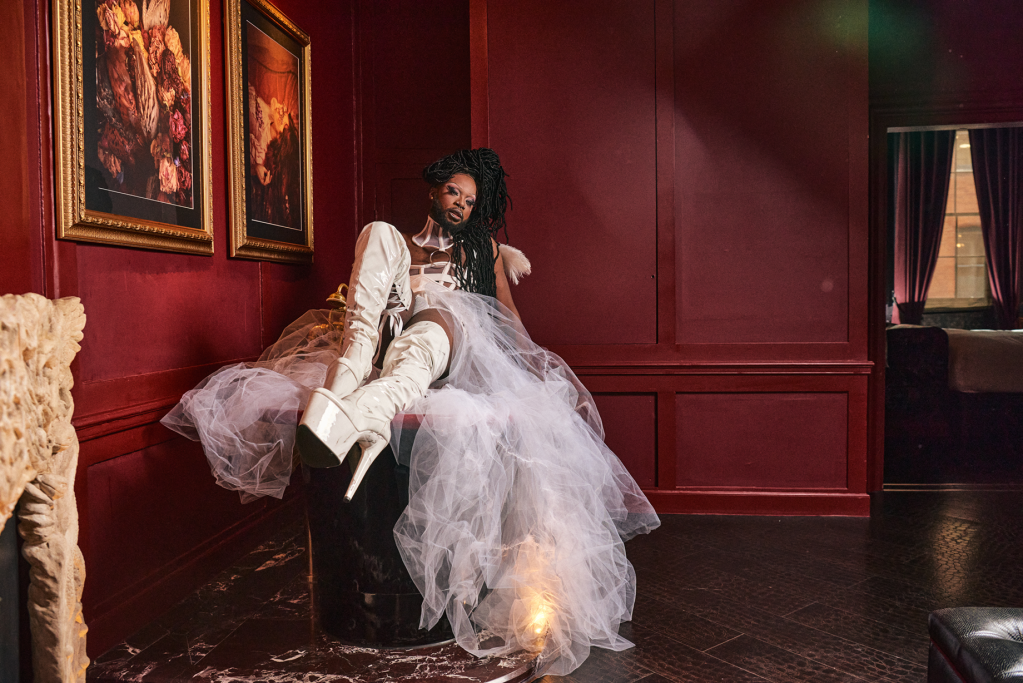
Terri Box, photo by Ki Price
Of course a key distinction between this exhibit and other ventures of deepfake/AI technology into the drag sphere is consent. In this exhibit every participant knew what was happening and was kept informed – “Working with Jake [Elwes]…they took so much care keeping [us] informed about how our digital images were going to be used and ensuring we were comfortable.”
When that consent and care doesn’t exist, the concern here is twofold. Firstly there is the feeling of violation that can come with having your selfhood captured and warped – at its most extreme this can be seen with non-consensual deepfake pornography. The twin issue to this is that it adds yet another layer of economic exploitation to the lives of these artists. AI and deepfake technologies generally work by being fed pre-existing data to use as a base palate, and it is clear through the slew of court cases around ChatGPT that there are significant grey areas around the legality and ethics of the AI training process. Drag artists generally don’t have big legal teams or associations that can be relied on to defend their economic interests – so this could become another sphere where an already exploited group of workers could be made more vulnerable.
Any effective push for artificial intelligence to expand into the field of drag is also going to need to compensate for the reality that the technology that exists at present is badly equipped to process non-normative bodies and presentations. And drag is a craft which is very much built upon those people, so any attempt to combine the two seems to be dead in the water until that changes. Furthermore, these technologies will have to prove that they can actually do something novel for the form of drag beyond gimmick or marketing exercise.
So where does that leave us? Robot drag queens don’t walk the earth. Deepfake drag kings aren’t stripping me to the cries of adoring crowds. No-one’s packing tips into the waistband of a server box. The reality is probably less Hollywood and more what Joyner describes “tech develops so gradually (even if rapidly) that we don’t notice the changes. When I first started you had to burn your tracks onto a CD for performance, now everyone has USB sticks, but I never noticed that change.”
The meaningful artistic developments of technology in drag won’t come in a sweeping wave or through grand corporate sponcon. If and when change comes, it’ll be through those on the edges pushing and experimenting, spurred on by a creative spirit – after all, as Bard the Beholder says – “people love a gadget”


